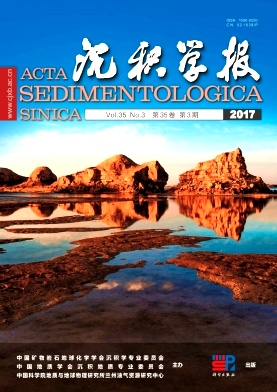A Study on Qingshankou Formation's Tight Oil Characteristics and Accumulation mode in the northern Songliao Basin
doi: 10.14027/j.cnki.cjxb.2017.03.017
- Received Date: 2016-02-23
- Rev Recd Date: 2016-07-11
- Publish Date: 2017-06-10
-
Key words:
- accumulation mode /
- tight Oil /
- Qingshankou Formation /
- Songliao Basin
Abstract: Through a comprehensive analysis of drilling, well logging, cores and experimental data, an in-depth study on the Qingshankou Formation's tight oil characteristics and accumulation mode in northern Songliao Basin was described and established. It is found that the unconventional reservoir is a densified reservoir which developed from platelike turbidity current in both deltaic front and lake facies region. The porosity of the reservoir is less than 10% in general, in some part the porosity could reach 15%, and the permeability is less than 0.1×10-3 μm2 in general. Reservoir spaces are intergranular pore, intragranular dissolved pore, mold pore, and microfracture. The diameters of pores range from 5~200 μm and the diameters of pore throat are less than 0.5 μm. The source rock is the lacustrine facies mudstone of the first and second Section in Qingshankou Formation, and that are typical of extensive distribution: kerogens are either type I or type II1, average TOC is 1%~3%, Ro is from 0.9%~1.1% and the rock attributes to mature high-quality source rock. Horizontally, the reservoir has some characteristics of facies belt and regional belt, but there is no obvious entrapment boundary. Vertically, the reservoir and the source rocks piled up alternatively and formed like flaky pastry, reservoir forming type is source-reserve impinge and mutualistic symbiosis. The oil bearing degrees of the reservoir are oil patch and oil stain. Oil immersion and oil-rich rocks do not exist, the crude oil belong to low viscosity and light crude. The reservoir does not have natural production, but a relatively high industrial capacity could be adopted in horizontal well by large-scale segmental bulk fracturing. Therefore, the study on platelike turbidite reservoir develops and accumulation mode develop new space for the tight oil exploration in Songliao Basin, and possess practical significance.
| Citation: | YANG KeXin, XIAO Jun, WANG Yu, NING XiaoYang. A Study on Qingshankou Formation's Tight Oil Characteristics and Accumulation mode in the northern Songliao Basin[J]. Acta Sedimentologica Sinica, 2017, 35(3): 600-610. doi: 10.14027/j.cnki.cjxb.2017.03.017 |






 DownLoad:
DownLoad: